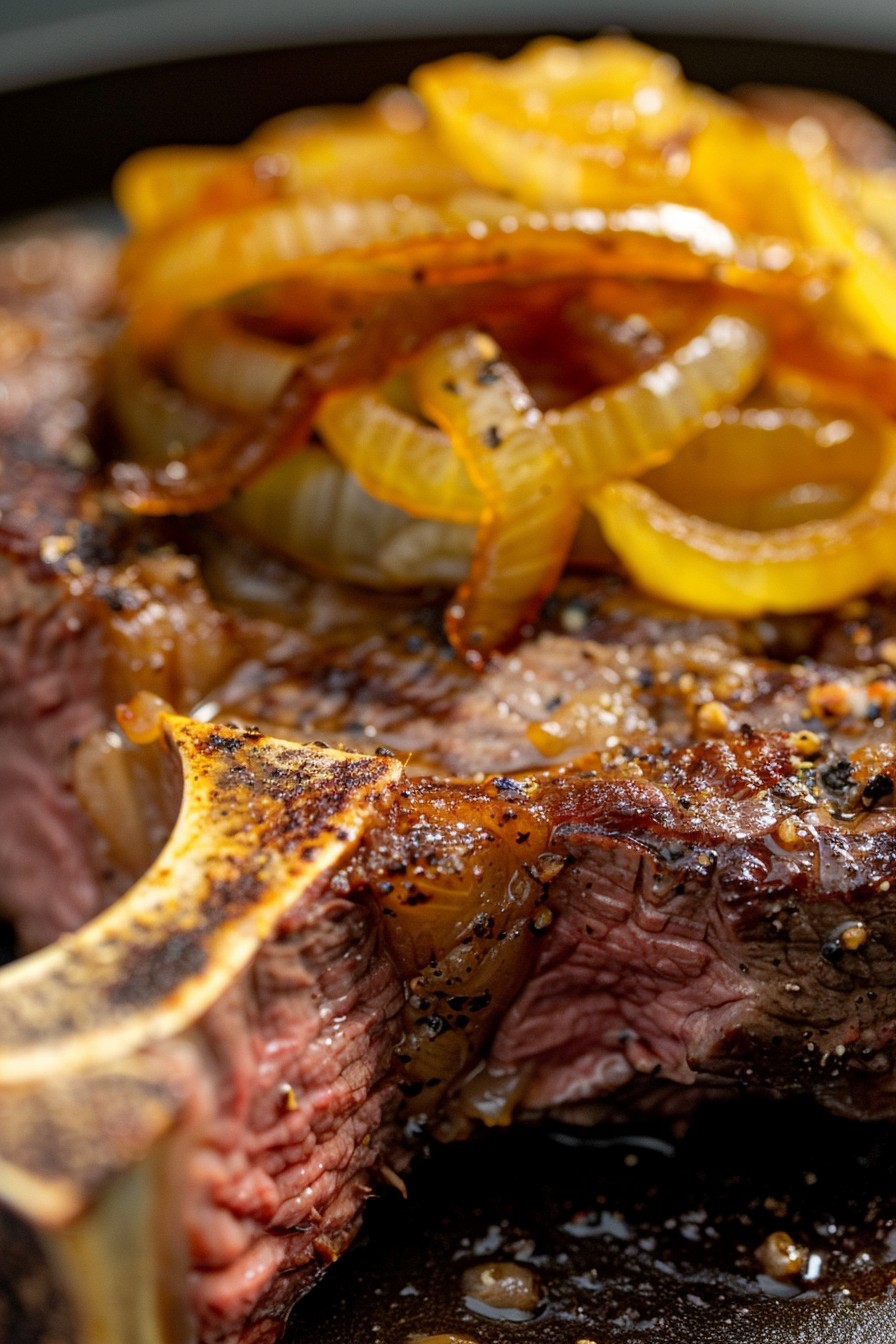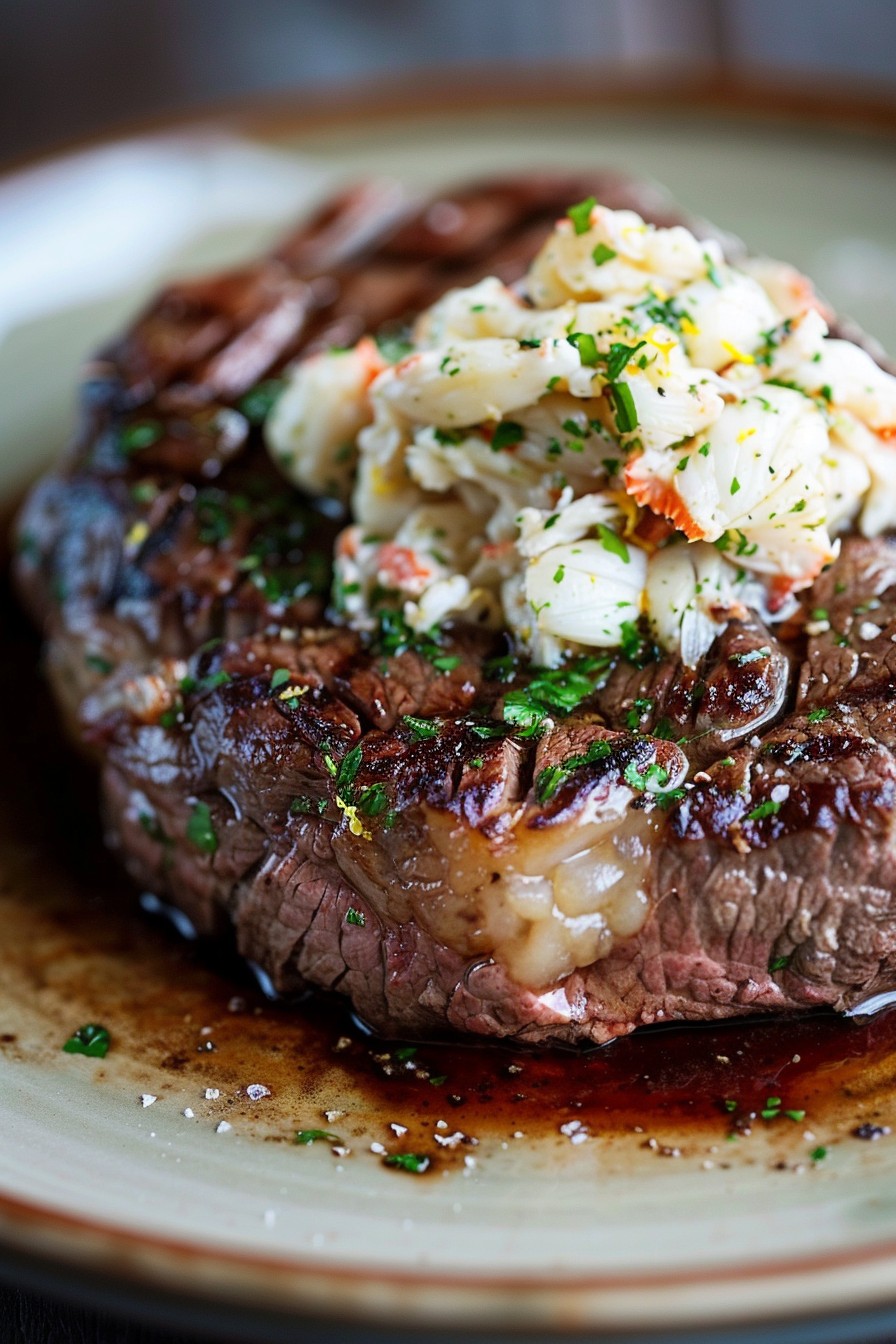Delight your taste buds with this classic steak and bearnaise sauce recipe that’s sure to impress. Perfect for a special dinner or when you’re just in the mood for something decadently delicious.
Why This Recipe Works
- The combination of a perfectly cooked steak and rich, tangy bearnaise sauce creates a flavor explosion that’s hard to resist.
- Using high-quality beef ensures your steak is tender and juicy, making every bite a delight.
- The bearnaise sauce, with its buttery and slightly acidic profile, complements the steak’s richness without overpowering it.
- This recipe is straightforward, with clear instructions that guarantee success even for beginners.
- It’s versatile, allowing for various cuts of steak and adjustments to the sauce to suit personal tastes.
Ingredients
- 2 ribeye steaks, about 1 inch thick
- Salt and freshly ground black pepper, to taste
- 2 tablespoons unsalted butter
- 1 tablespoon olive oil
- 3 egg yolks
- 1 tablespoon white wine vinegar
- 1 tablespoon water
- 1/2 cup unsalted butter, melted
- 1 tablespoon fresh tarragon, finely chopped
- 1 teaspoon shallot, finely minced
Equipment Needed
- Heavy skillet or cast-iron pan
- Mixing bowls
- Whisk
- Double boiler or a heatproof bowl over a pot of simmering water
- Measuring spoons and cups
Instructions

Step 1: Prepare the Steak
Start by seasoning both sides of your steaks generously with salt and pepper. Let them sit at room temperature for about 30 minutes to ensure even cooking. Heat your skillet over medium-high heat and add the olive oil. Once hot, add the steaks and cook for about 4 minutes on each side for medium-rare, or adjust the time based on your preferred doneness. Tip: Letting the steak rest for a few minutes after cooking allows the juices to redistribute.
Step 2: Make the Bearnaise Sauce
In a double boiler over simmering water, whisk together the egg yolks, vinegar, and water until the mixture thickens and doubles in volume. Slowly drizzle in the melted butter while continuously whisking to create a smooth emulsion. Stir in the tarragon and shallot, then season with salt and pepper to taste. Tip: If the sauce gets too thick, a splash of warm water can thin it out.
Step 3: Serve and Enjoy
Plate your rested steaks and spoon the bearnaise sauce over the top. Serve immediately with your favorite sides. Tip: For an extra touch of elegance, garnish with a sprig of fresh tarragon.
Tips and Tricks
Mastering the perfect steak and bearnaise sauce is all about technique and timing. Always start with room temperature steak to ensure even cooking. When making the bearnaise sauce, keep the heat low and steady to avoid scrambling the eggs. If your sauce breaks, don’t panic; whisking in a tablespoon of cold water can often bring it back together. Experiment with the amount of tarragon and shallot in the sauce to find your perfect balance of flavors. Remember, practice makes perfect, so don’t be discouraged if your first attempt isn’t flawless.
Recipe Variations
- Try using different cuts of steak, such as filet mignon or New York strip, for a variation in texture and flavor.
- Add a pinch of cayenne pepper to the bearnaise sauce for a subtle kick.
- Substitute the tarragon with other fresh herbs like chervil or chives for a different herbal note.
- For a richer sauce, incorporate a tablespoon of heavy cream into the bearnaise.
- Grill the steak instead of pan-searing for a smoky flavor that pairs wonderfully with the creamy sauce.
Frequently Asked Questions
Can I make the bearnaise sauce ahead of time?
While bearnaise sauce is best served fresh, you can keep it warm for up to an hour by placing the bowl in a larger bowl of warm water. Stir occasionally to maintain its texture. However, it’s not recommended to make it too far in advance as it may separate or thicken too much.
What’s the best way to tell if my steak is done?
The most accurate method is to use a meat thermometer. For medium-rare, aim for an internal temperature of 135°F. Without a thermometer, you can use the finger test: press the center of the steak; if it feels like the fleshy part of your palm when you touch your thumb to your middle finger, it’s medium-rare.
Can I use dried tarragon instead of fresh?
Yes, but since dried herbs are more concentrated, use about one-third the amount of fresh. Remember to crush the dried tarragon between your fingers before adding it to release its oils and maximize flavor.
Summary
This steak and bearnaise sauce recipe is a classic for a reason. With its perfect balance of flavors and textures, it’s sure to become a favorite. Follow the tips and variations to make it your own, and don’t forget to enjoy the process as much as the delicious result.
